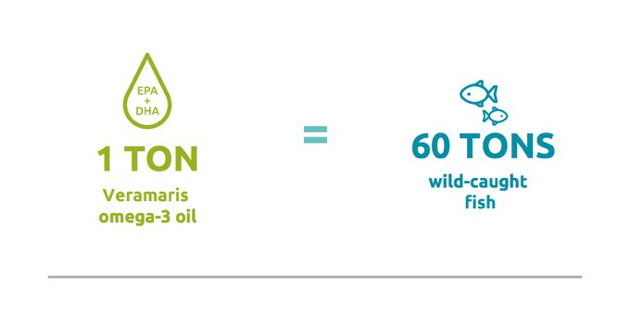Challenge FAQ
Who is the organizer?
Who is the entrant?
The lead entrant can form partnerships with other companies to create an Entrant Team. For each partnering company, the lead entrant should send the following information to f3fishfreefeed@gmail.com:
(1) the name of company and website
(2) the name, title, address, work phone number, mobile
phone number, and email address of the contact person at the company, and include
(3) a brief description of the partnership, and
If the lead entrant is partnering with other companies for purposes of aggregating total sales of qualifying F3 Oil Types to End Customers, then for each such partner, in addition to (1)-(3) above, please also include:
(4) a description of the partner company’s sales territory.
Partnering companies can be added to Entrant Teams until November 30, 2018.
The lead entrant of the winning team will be awarded the prize (and be responsible for splitting the prize at its discretion among its Entrant Team partners) as described in the Challenge Rules.
What are the advantages of joining the Challenge, even if we are not in a position to win?
- Publicity: Exposure of your product in the press may be helpful to book orders prior to a commercial launch or increase orders if your product is already being sold commercially. Our press targets not just English but China and South East Asian markets.
- Networking event: Contestants who have submitted samples by Nov. 2018 will be invited in Feb. 2019 to a networking event with large feed companies and others interested in innovative ingredients for aquaculture.
Can feed companies participate?
The company that sells the Qualified F3oil should register for the Challenge (as the lead entrant) and will need to include the following information for the partnering feed company:
(1) the name of company and website
(2) the name, title, address, work phone number, mobile
phone number, and email address of the contact person at the company, and include
(3) a brief description of the partnership
Please send the aforementioned information (1)-(3) to f3fishfreefeed@gmail.com.
We are a feed company. We buy EPA, DHA, and ARA separately from different vendors and make our own oils in different combinations for different species. How can we participate in the contest?
1: One approach would be to have one vendor mix fatty acids from all sources and sell that product to you. That vendor can mix different oils for different species as long as it fits the criteria. In this scenario, the vendor would be the lead entrant in the contest (since they are the one selling the F3oil product(s)) and could include you on their contestant team.
2: If you have formulated a Qualified F3oil in house and are selling it to another division of the company for aquaculture feed production, then you can register for the contest as the lead entrant, as long as one or both of the following conditions are met:
a) The ingredient providers are included as partners of your Entrant Team
b) You make the Qualified F3oil commercially available (at an equivalent cost)
How did you decide on the fatty acid profile?
Can you tell me more about how these fatty acids were selected for the Challenge?
There are obvious sources for EPA and DHA but I am having difficulty sourcing ARA. Do you have any recommendations?
How is the challenge measuring success?
Can end feed products that use a given F3oil product still contain some fish meal and/or fish oil?
Yes, because this challenge is not focused on the end feed product but on the F3oil product (ingredient). Our only requirement is that the F3oil product meet the criteria mentioned, including being free of fishmeal and fish oil. We want to increase sales of fish feeds that use substitute ingredients, so we encourage full or even half replacement.
Can you go over the timeline of the contest?
How do you select a winner?
How do you make sure the contest is fair?
Is the Challenge open to non-U.S. companies?
Are you against using seafood in aquaculture feeds?
No. In fact, we are considering another prize targeted towards recycling farmed fish waste. However, for this prize we want to increase the options available for substitute oil sources for aquafeeds since the supply of wild caught fish and in particular forage fish, which are the most common source of oil used in aquafeeds, is at risk. More innovation is needed to find additional ingredients and cost effective formulations if the industry is to continue to grow.
Why are aquaculture by-products not allowed in the F3oils?
What are some of the concerns with using bycatch and seafood processing byproducts for fish meal and fish oils?
We have an ingredient company with an ingredient that is promising for aquaculture. What do I need to do to determine the market potential, and break into the aquafeed industry?
Aquafeed companies are keenly interested in substitute ingredients to replace fishmeal and fish oil, because of their high cost. But, ingredient replacement is risky. To prove to aquafeed companies that your ingredient has promise, we recommend you follow the recommended Ingredient Evaluation Process outlined here.
It is well documented that the inclusion of omega-3 fatty acids, including docosahexaenoic acid (DHA) and eicosapentaenoic acid or (EPA), in the human diet are beneficial by supporting normal growth, immunity, and improving cardiovascular and brain health. However, can the human body convert short chain omega-3s, including alpho-lenic acid (ALA) and stearidonic acid (SDA) found in plants and seeds, into longer chain omega-3s, including EPA and DHA? If so, does this negate the need for humans to consume foods that contain naturally occurring long-chain omega-3s, like fish?
1 http://lpi.oregonstate.edu/mic/other-nutrients/essential-fatty-acids#metabolism-bioavailability
2 https://www.ncbi.nlm.nih.gov/pubmed/9637947
3 http://www.dhaomega3.org/Overview/Conversion-Efficiency-of-ALA-to-DHA-in-Humans

